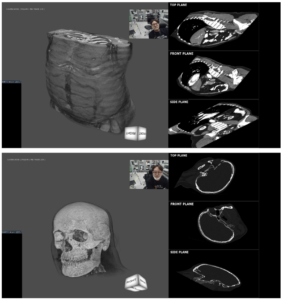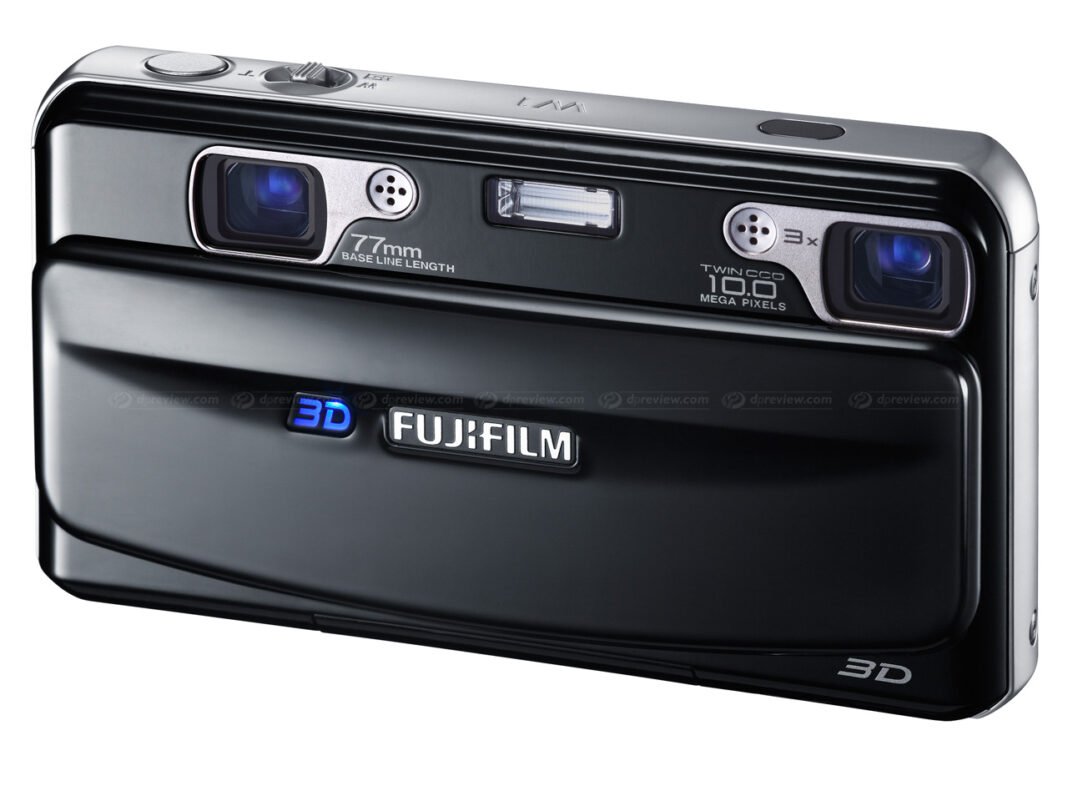Imagine a world where 3D visuals come alive without the need for bulky headsets or specialized glasses. This captivating reality is brought to life by autostereoscopic 3D cameras, revolutionizing the way we capture and experience 3D content. This comprehensive guide delves into the world of autostereoscopic 3D cameras, exploring their innovative technology, the benefits they offer, and the exciting future applications waiting to be unlocked.
Unveiling the Magic: How Autostereoscopic 3D Cameras Work
Unlike traditional cameras that capture a single 2D image, autostereoscopic 3D cameras utilize a unique approach to capture depth information. Here’s a breakdown of the core functionalities that power these fascinating devices:
- Multiple Lenses: Autostereoscopic 3D cameras employ an array of lenses, typically ranging from two to hundreds, depending on the desired level of detail and depth perception. These lenses capture slightly different perspectives of the scene, mimicking the way our own eyes perceive depth.
- Image Processing Magic: The captured images from each lens undergo complex image processing algorithms. These algorithms analyze the information and reconstruct a 3D representation of the scene, allowing for the creation of a truly immersive visual experience.
- Display Technology: To view the captured 3D content without glasses, autostereoscopic 3D cameras require specialized displays. These displays utilize various techniques, such as lenticular lenses or parallax barriers, to direct slightly different images to each eye, recreating the illusion of depth.
While the technical details might seem complex, the result is a captivating visual experience where 3D content appears to float above the screen, offering a more natural and engaging way to interact with the captured scene.
Beyond Gimmickry: The Benefits of Autostereoscopic 3D Cameras
Autostereoscopic 3D cameras offer a plethora of advantages over traditional cameras and 3D capture methods involving glasses. Here’s why this technology is poised to revolutionize the way we capture and interact with visual content:

- Enhanced User Experience: Eliminating the need for bulky headsets or specialized glasses significantly improves the user experience, making 3D content more accessible and enjoyable for a wider audience.
- Increased Portability: Autostereoscopic 3D cameras can be designed to be more compact and portable compared to traditional 3D camera rigs, allowing for greater flexibility in capturing 3D content on the go.
- Real-Time Applications: Advancements in processing power are enabling the development of autostereoscopic 3D cameras capable of real-time 3D capture and display, opening doors for applications in areas like gaming, augmented reality, and medical visualization.
- Reduced Cost: As autostereoscopic 3D technology matures, the cost of these cameras is expected to decrease, making them more accessible for both professional and amateur content creators.
- Wider Content Creation: The ease and accessibility of autostereoscopic 3D cameras can foster a surge in the creation of 3D content, enriching the landscape of entertainment, education, and scientific exploration.
These benefits paint a promising picture for the future of autostereoscopic 3D cameras, with their potential to transform a wide range of industries and enhance our interaction with the visual world.
Unveiling the Applications: Where Autostereoscopic 3D Cameras Shine
The potential applications of autostereoscopic 3D cameras are vast and encompass various industries. Here are some exciting possibilities waiting to be explored:
- Entertainment: Imagine watching movies or playing games where 3D visuals come alive without glasses, creating a more immersive and engaging experience for viewers and gamers alike.
- Education and Training: Autostereoscopic 3D cameras can revolutionize education by allowing for the creation of interactive 3D learning materials that bring complex concepts to life in a captivating way. Similarly, these cameras can be utilized for medical training, allowing students to practice procedures in a realistic 3D environment.
- Scientific Exploration: Autostereoscopic 3D technology can be used to capture intricate details of objects and environments, aiding in scientific research and analysis. Imagine paleontologists studying 3D scans of fossils or archaeologists exploring virtual recreations of ancient sites.
- E-commerce and Product Design: 3D product visualizations captured with autostereoscopic cameras can offer a more realistic and interactive online shopping experience, allowing customers to view products from all angles before making a purchase. Similarly, product designers can utilize these cameras to create and evaluate 3D prototypes in a more efficient and immersive way.
- Healthcare and Telemedicine: Autostereoscopic 3D cameras can be used for remote medical consultations, allowing doctors to examine patients in a more detailed and interactive manner, potentially leading to improved diagnosis and treatment.
Capturing the Future: Challenges and Advancements in Autostereoscopic 3D Cameras
Despite their immense potential, autostereoscopic 3D cameras still face some challenges that need to be addressed for widespread adoption:
- Resolution and Viewing Angles: Current technology often presents limitations on resolution and viewing angles. While the perceived depth is impressive, the overall image quality and the range of comfortable viewing angles can be improved.
- Content Creation Workflow: The capture and post-processing workflow for autostereoscopic 3D content requires specialized tools and techniques. Simplifying this workflow will be crucial for encouraging broader content creation.
- Display Technology: Advancements in display technology are necessary to create high-quality, autostereoscopic 3D experiences. Developing displays with wider viewing angles and improved resolution is key for maximizing user enjoyment.
- Cost and Standardization: As the technology matures, the cost of autostereoscopic 3D cameras needs to become more competitive to entice a wider range of content creators. Standardization of formats and workflows will also be crucial for seamless content creation and distribution.
However, significant advancements are being made to address these challenges:
- Improved Image Processing: Advancements in image processing algorithms are leading to sharper images and more accurate depth perception in captured 3D content.
- AI-powered Solutions: Artificial intelligence is being explored to automate aspects of the capture and post-processing workflow, making it more efficient and user-friendly.
- Emerging Display Technologies: New display technologies, such as volumetric displays, hold immense promise for creating glasses-free 3D experiences with high resolution and wide viewing angles.
- Collaboration and Innovation: Collaboration between camera manufacturers, display makers, and content creators is fostering innovation and accelerating the development of autostereoscopic 3D technology.
With these advancements, we can expect autostereoscopic 3D cameras to overcome current limitations and become a more accessible and impactful technology in the years to come.
A Glimpse into the Future: The Evolving Landscape of Autostereoscopic 3D Cameras
As autostereoscopic 3D camera technology continues to evolve, we can expect to see some exciting developments:
- Integration with Mobile Devices: Autostereoscopic 3D capabilities might become integrated into smartphones and other mobile devices, allowing for capturing and sharing immersive 3D content on the go.
- Augmented Reality (AR) Applications: The combination of autostereoscopic 3D technology with AR could create groundbreaking new experiences, where virtual elements seamlessly blend with the real world in a 3D space.
- Virtual Reality (VR) Enhancements: Autostereoscopic 3D cameras could potentially be used to capture high-quality 3D environments for VR experiences, offering a more realistic and immersive escape into virtual worlds.
- Personalized Content Creation: Advancements in technology could make it easier for individuals to create and share their own personalized 3D content using autostereoscopic 3D cameras, fostering a more interactive and user-generated approach to 3D media.
The future of autostereoscopic 3D cameras is brimming with possibilities, promising to change the way we capture, view, and interact with visual content. This technology has the potential to revolutionize various industries, enhance education and entertainment, and ultimately, transform the way we experience the world around us.
Conclusion: Stepping into a World of Dimension: The Allure of Autostereoscopic 3D Cameras
Autostereoscopic 3D cameras usher in a new era of visual storytelling and capture. By eliminating the need for glasses and creating a more natural 3D viewing experience, these cameras open doors for captivating applications across various fields. While challenges remain, ongoing advancements promise to refine the technology and unlock its full potential. As autostereoscopic 3D cameras evolve, we can expect a shift in how we interact with the visual world, embracing a future where 3D content comes alive, offering a more immersive and engaging experience for everyone.
